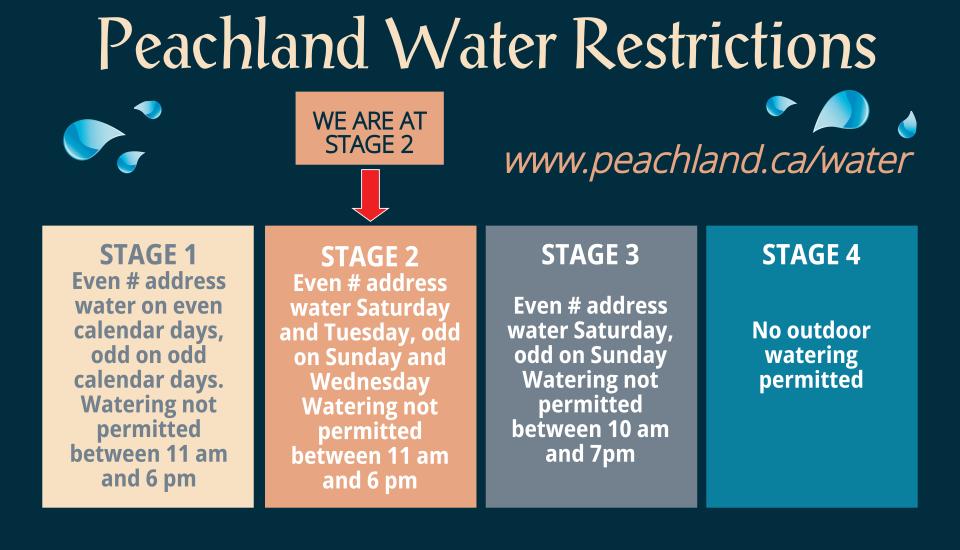Image

See below for detailed watering restrictions.
The District's water conservation program is intended to promote efficient use of water resources to ensure the maximum benefit can be obtained from the available water supply and minimize the need to develop costly new water sources. Efficient water use also saves money through lower operating costs and deferred capital costs.
Small Drips Equal Big Losses!
Image
One small drip can waste as much a 75 liters of water a day! Make sure that precious water isn't leaking down the drain or hitting the gutter without nourishing your grass, trees and plants.
- Repair Leaky faucets and always turn off your taps tightly so they don't drip.
- Consider auto irrigation for your lawn and garden.
- Adjust sprinkler timers or place a tin can on the lawn to measure how long it takes to collect one inch of water. That's how little your lawn needs each week even during warm weather.
- Check your toilets for leaks. Put a few drops of food coloring in your toilet tank. If, without flushing, colour appears in the bowl within 30 minutes, you have a leak and it should be repaired immediately.
- Install water-efficient plumbing fixtures such as low-flow shower heads and toilets that use six liters of water or less per flush. If you have an older toilet, simply place a weighted plastic bottle filled with water or sand in the water tank to reduce the amount of water per flush.
- Adjust the water level of your washing machine and use cold or warm water instead of hot.
More Water Doesn't Always Mean More Green
- A typical lawn only needs about an inch of water each week.
- Most shrubs and trees only need water once a week.
- Lawns look healthier with moderate watering every 3 - 5 days rather than watering for a short period every day.
Find more indoor and outdoor water conservation tips at www.makewaterwork.ca
Further Information
Image

For further conservation or drought information in the Okanagan please visit the following websites:
- Okanagan Basin Water Board - www.okwb.ca
- Okanagan WaterWise - www.okwaterwise.ca
- Peachland Outdoor Water Restriction Stages
